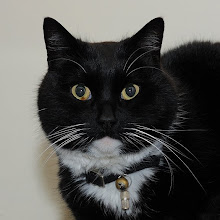Thursday, 17 November 2011
Campement de L'Armee de Sa Maiesté Le Roy de La Grande Bretagne A Houndslaucheats
While on army summer camps, the Wilhelmshöher Kriegskarten at the Marburg Digital Archives contains a nice print of the army at Hounslow Heath in the summer of 1687. The title is in French. The original appears to be huge: 2.5 meters by 71 centimeters! Now, that would make a nice decoration in ones office!
Details on the regiments will be for a future post, and let several screenshots be sufficient for now. Above one sees the complete print. Two regiments of horse are shown below. On the left the future 3rd Dragoon Guards, and on the right The Princess Anne of Denmark's Regiment of Horse. This regiment was decimated at Steenkerke in 1692 and disbanded afterward.
Some foot: a battalion of Guards.
And the epicenter of the camp: the King's quarters.
Tuesday, 15 November 2011
Glorious Revolution

Today, some 323 years ago England was invaded by a sizable Dutch Army. Within several weeks the English army had dissolved itself and the Dutch troops under William III of Orange entered London by late December. It can be argued that by this event England lost its innocence as bystander and was forced to enter the European arena of dynastic struggle. Instead of putting forward theories and humble thoughts, let a nice plate mark this occasion (found at the digital archive at Marburg)
Labels:
Dutch army,
Glorious Revolution,
prints,
William III
A Description of the camp on Black-Heath, July 1697

A nice print found at EEBO, depicting seven regiments of foot of the English army at camp at Black-Heath in July 1697. The camp was formed to counter any possible French thread from the other side of the Channel. It was broken up by the end of July.
The accompanying text gives details on how the camp was set up: distance between soldiers' and lieutenants' tents 15 paces, between captains and lieutenants 20 paces, etc. Furthermore details on the exercise of muskets (still matchlock judging from the text) and pikes. Sutlers (derived from Dutch zoetelaars) were in the rear at 40 paces.
The regiments are neatly ordered by their relative seniority: the most senior on the flanks and the most junior in the middle. From left to right the regiments are identified as follows, with their rank in camp in square brackets:
[1] The King's Battalion ~~ formed from the 1st Regiment of Foot Guards. Its commander, lieutenant colonel Withers, was commander in chief of the camp.
[3] Tidcomb's Regiment ~~ raised in 1685, the future 14th Regiment of Foot.
[5] Coote's Regiment ~~ raised in 1689, and disbanded in 1698.
[7] Farrington's Regiment ~~ raised in 1694, and disbanded in 1698. Re-raised in 1702 and became became the future 29th Foot.
[6] Northcote's Regiment ~~ raised in 1694 and disbanded in 1698.
[4] Sir Henry Bellasis's Regiment ~~ raised in 1689 and became the future 22nd Foot.
[2] Major General's Steuart's Regiment ~~ raised in 1685 and became the future 9th Regiment of Foot. Note that this regiment is dubbed as Fusiliers.
A neat ordering by the book!
Monday, 7 November 2011
Skulking in Holes and Corners ~ by Jamel Ostwald
A new blog has been added for the pleasure, entertainment and interest of early modern warfare specialist and enthusiasts. This blog, named Skulking in Holes and Corners is maintained by Jamel Ostwald, who is known for his work on Ramillies and decisive battles and Vauban.
Enjoy!
Enjoy!
Subscribe to:
Posts (Atom)







